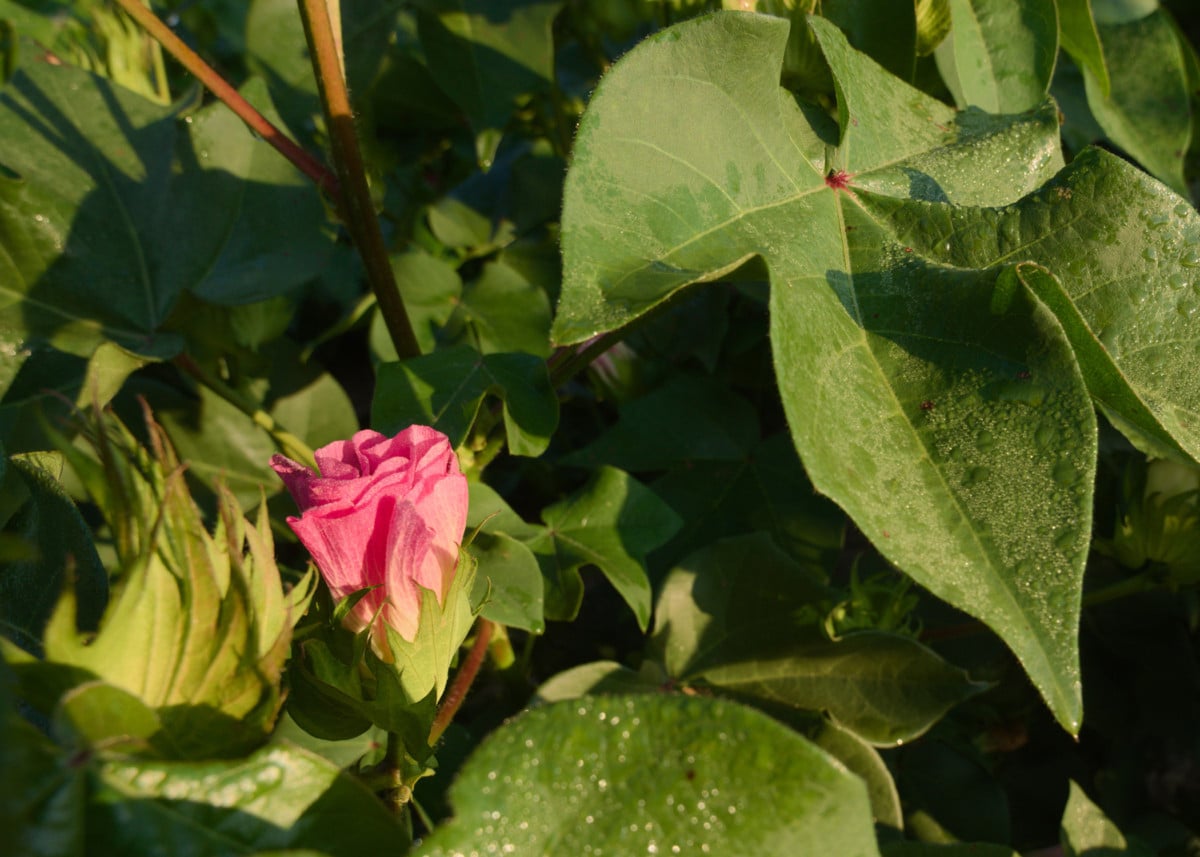As most cotton across Mississippi is setting bolls ahead of schedule this year, some fields look fantastic and others are struggling, depending on the weather and irrigation.
The U. S. Department of Agriculture has estimated that 21 percent of the cotton crop is in excellent condition and 49 percent is in good shape. They estimate only three percent of the crop is in poor condition.
Darrin Dodds, a cotton specialist with the Mississippi State University Extension Service, said overall fruit retention is higher than in recent years, so the crop is in good shape.
“The next month will be pivotal to the overall yield of this crop,” Dodds said.
About 60 percent of the state’s cotton is irrigated. Dodds said most growers with irrigation have made two applications to date and may have to make one more, depending on rainfall through the first week of August.
“Dryland cotton with limited rainfall will likely see reduced yield compared to areas where rainfall has been adequate to abundant, as well as where irrigation is in place,” Dodds said.
With the crop in fairly good condition as it is related to rain and irrigation, farmers are saying their biggest issue facing cotton is managing bollworms.
The MSU Extension Service says there has been an extended period of infestation, and some resistant cotton has not performed as well against this pest as in previous years because bollworms are developing resistance to the proteins used to control them.
Jeff Gore, an Extension entomologist who also works with the Mississippi Agricultural and Forestry Experiment Station at the Delta Research and Extension Center in Stoneville said it has been an unusual year for insects in the Delta.
“Growing conditions were very good during planting time, and we had very few issues with thrips,” Gore said. “Additionally, tarnished plant bug pressure has been light in most areas with a few hot spots, but it has been manageable because we currently have a sufficient number of insecticides to rotate.”
For bollworms, growers pay a technology fee for enhanced genetic traits, however, the defenses are not working as well as they used to. Growers must now make multiple insecticide applications costing from $15 to $20 per acre just to control bollworms, and they have to add additional insecticides to control plant bugs, spider mites, aphids and other pests.
“In some cases, we are hearing about sprays being made with three to four insecticides in the tank, which can push that cost up to well over $30 per acre,” Gore said. “We are able to manage the insects, but the issue is with the cost of control on top of the technology fees.”
Heat accumulation and moisture levels are other ongoing concerns. Dennis Reginelli, regional Extension specialist based in Oktibbeha County, said cotton in the eastern part of the state is up and down this year.
“We have some areas, especially in south Lowndes and Noxubee counties, that have had almost no rain in June and July,” Reginelli said. “We have quite a bit of acreage that is irrigated, but also quite a bit of dryland cotton that can make really good yields if we get enough rain. This year, we have several fields that are just missing the rains.”
Warm weather in May allowed cotton across the state to grow well and quickly, establishing good root systems and stalks. The plants now need moisture to maintain and develop the fruit that has been set.
“Where we’re irrigating or have rains, our cotton is beautiful with probably one of the better fruit sets we’ve had in years,” Reginelli said.
Josh Maples, an Extension agricultural economist, said cotton prices are relatively strong right now with the December 2018 cotton futures trading around 88 cents per pound. This time last year, the December price was around 68 cents per pound.
“Lower expected U.S. production is supporting the price outlook this year,” Maples said. “The latest World Agricultural Supply and Demand Estimates report showed a tightening of foreign supplies and ending stocks. The lower projected ending stocks are supportive of cotton prices, as they suggest lower supplies.”




